The tradition of shark eating in Iceland is rich and can be traced back centuries. Despite this, very few scientific studies have been conducted to examine or improve the mechanism of action of these foods. With a grant from the Food Fund, Matís' staff in collaboration with Bjarnarhöfn tourism, the largest producer of the best shark in Iceland, has worked on improvements there with the project Hákarlsverkun.
Election of a shark (Somniosus microcephalus) is an age-old method of preservation. Kæstur hakarl was for a long time an important source of energy and protein and also a large part of Icelanders' diet, but today it is mainly eaten as a delicacy on the dry land. Kæstur hákarl is also popular with tourists who like to consider it a national dish of Icelanders. It is important from a cultural point of view and Icelandic food tradition that a production process as unique as the effect of shark is, will continue to be practiced and that we have more scientific and technical knowledge of the effect of shark to ensure that the product is safe and of the right quality.
Shark action is divided into two parts, one is cooling and the other is drying. The goal of the project Hákarlsverkun was to identify and understand the role of the microbes that make the shark suitable for human consumption. Also evaluate whether it is possible to shorten the reaction time and understand what effect different handling of the raw material at the beginning of the reaction can have on the final product.
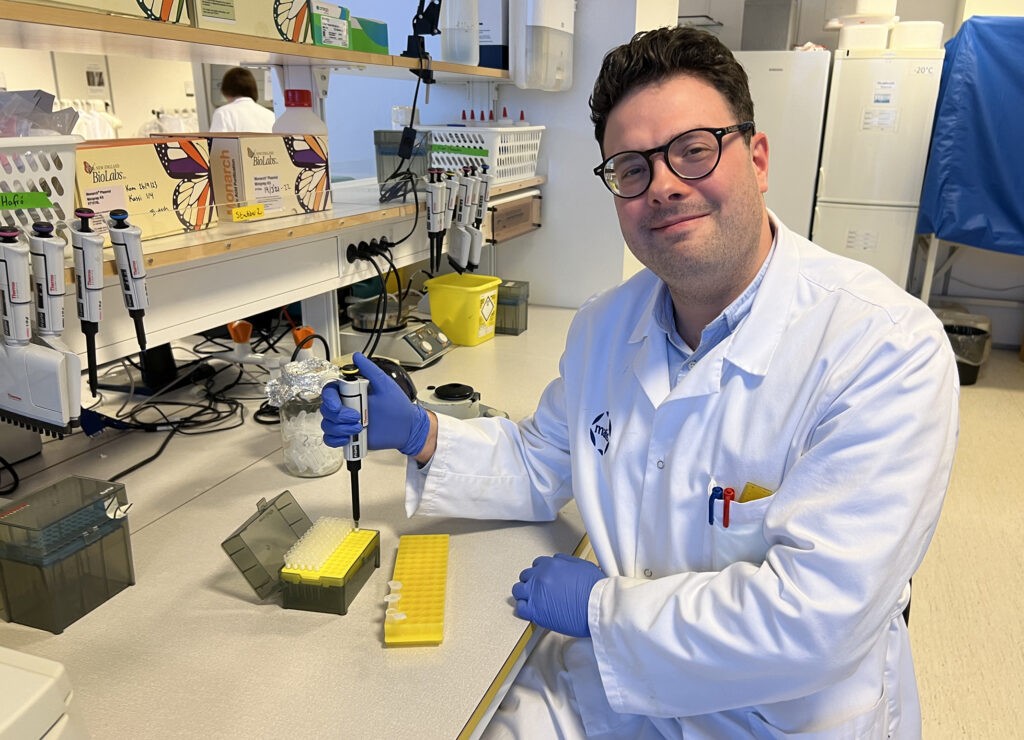
The cleaning process is actually both a preservation and a detoxification process, where chemical compounds that contain ammonia and are thought to contribute to the toxic effects of an unharmed shark are transformed by microbial enzymes. These chemical compounds that are found in large quantities in fresh shark are on the one hand urea which is broken down into ammonia and on the other hand Trimethylamine N-oxide (TMAO) which is reduced to Trimethylamine (TMA) and Dimethylamine (DMA). After freezing, the shark is left to hang in open drying huts called shelves for several weeks or months. In the project, comparative measurements were made on the effectiveness of a fresh shark on the one hand and on a shark that had been frozen and thawed before being frozen. The shark in the study was worked for 13 weeks, at which point it was considered ready for consumption.
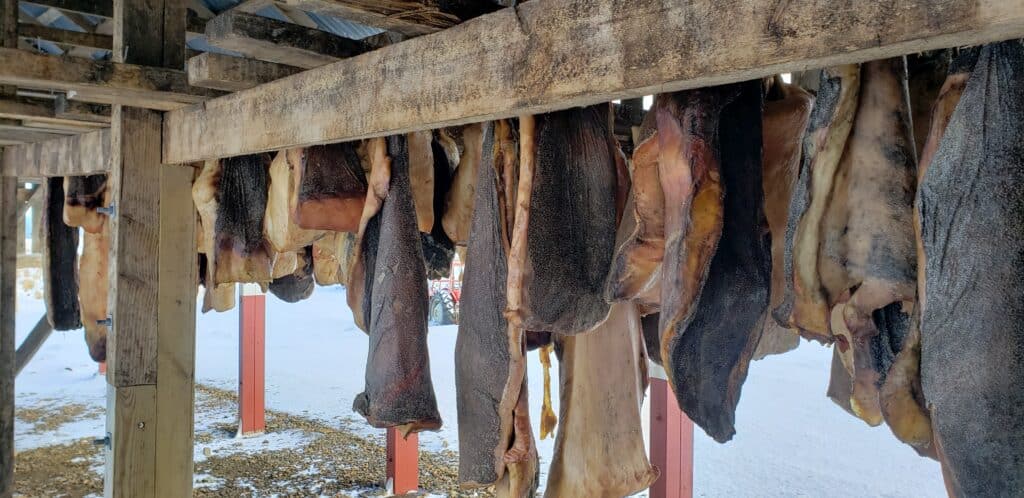
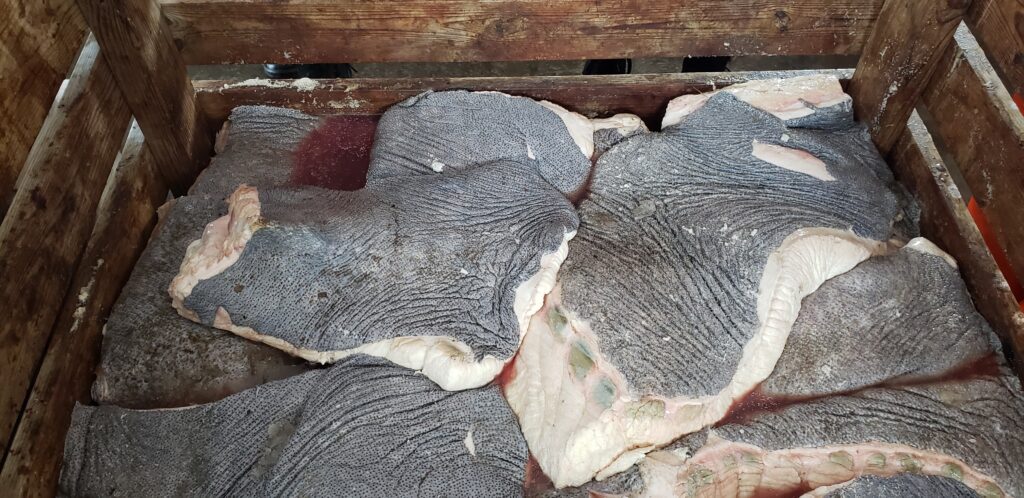
The shark was sampled weekly during the curing period and every other week during the drying period. Chemical and microbiological measurements were made on all samples, but at the same time a sensory evaluation was carried out on the shark samples when they were considered suitable for consumption, i.e. during drying. The chemical measurements measured TMAO, TMA, DMA, acid and water content of the shark. In the microbial measurements, both cultures were carried out on agar plates, but also measurements with molecular biological methods (16S rRNA sequencing), which provide additional possibilities to assess the amount and analyze the diversity of the bacteria involved in the shark's digestion.
The project demonstrated for the first time which bacteria are present and to what extent over the entire course of action. It is thanks to these bacteria that shark action has played a part in keeping Icelanders alive throughout the centuries. The results of the project indicate that the curing process could be shortened, as the substance TMAO is destroyed in 5 weeks, but the shark is often cured considerably longer. It would also be possible to improve the process or control it with synthetic microbial cultures.
The chemical measurements demonstrated that TMAO decreased below the detection limit after five weeks of freezing, while at the same time the acidity in the shark increased. At the same time, the concentration of the constituents TMA and DMA increased. Furthermore, the project revealed that a diverse microflora is involved in the digestion of a shark. Microbial counts on culture bowls showed that the growth of the total number of microorganisms and known spoilage bacteria was high during the first weeks of cooling, but then decreased rapidly and remained so through the final step of drying.
Molecular biological analysis on the shark bites revealed gradual changes in the composition of the bacterial flora during curing, which divided the curing process into three distinct phases, but large changes in the composition of the bacterial flora stopped during drying. Molecular biological methods have not been used before to evaluate the entire biological process of a shark, as far as is known, but they give a good picture of the diversity of the microflora in the shark bites.
There was a clear difference in the composition of the initial microflora depending on whether the raw material was fresh or concentrated. As the freezing progressed, however, the composition became comparable in fresh and thawed shark. A relationship was found between high concentrations of TMAO and the bacterial genera Photobacterium and Pseudoalteromonas in the initial phase of purification and in addition a relationship was found between a high concentration of TMA/DMA and the bacterial genera Atopotypes, Pseudomonas and Tissierella in the final phase of cooling.

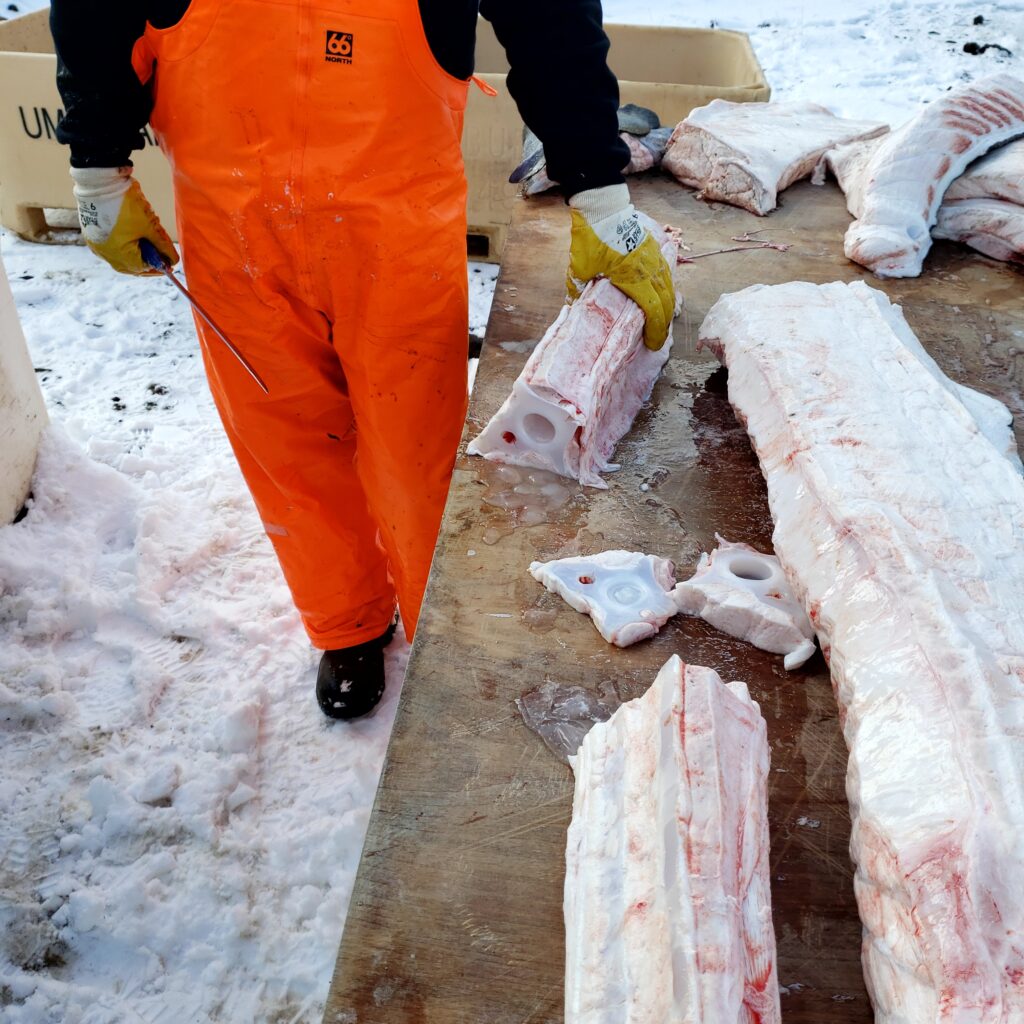
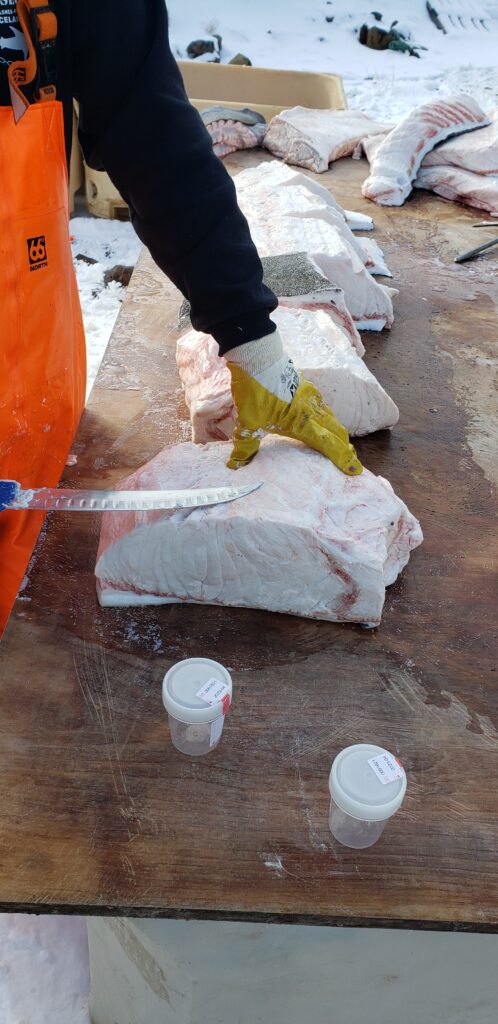
The future of shark research.
This project, Hákarlsverkun, is now finished, but the work on it raised all kinds of questions that would be nice to find answers to with further research. For example, the researchers say that approx. one out of four sharks does not work correctly, but the product is damaged, despite the fact that all processes are exactly the same for all the raw materials. This could have something to do with the microflora, but hopefully Matís future research in collaboration with shark producers will reveal it.
Podcast show
Snorri Páll Ólason worked on this project in his master's program together with other Matís staff, but he was an interviewee in Matvælin, Matís' podcast program about research and innovation in food production. In the episode, he tells about the project and what it involved in a lively and entertaining way. Listen to the podcast here: A wounded shark, the national right of Icelanders?
Peer reviewed article
One product of the project was a peer-reviewed article published in the journal Heliyon detailing the results. The article is available here: Unlocking the microbial diversity and the chemical changes throughout the fermentation process of "shark”, Greenland shark.
